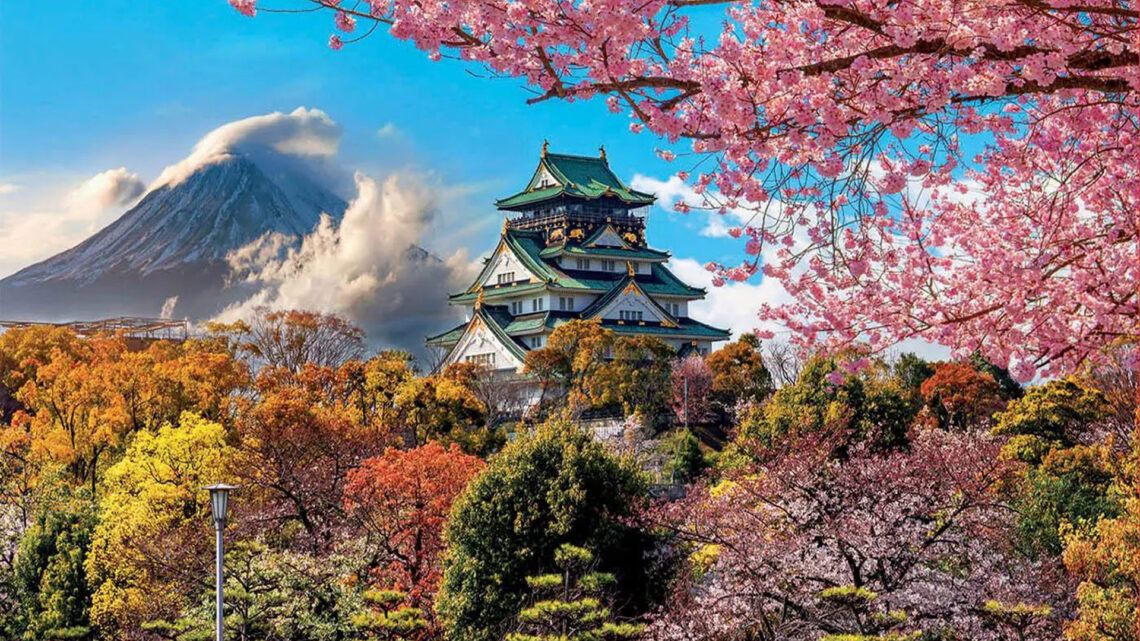
The Tottori Sand Dunes (Tottori Sakyu) are one of the most fascinating natural phenomena in Japan and one of the most well-known tourist destinations in Tottori Prefecture. These expansive sand dunes stretch along the coast of the Sea of Japan, offering visitors a unique landscape rarely found in Japan. With their vast, golden sand stretches, the Tottori Sand Dunes resemble desert landscapes one might expect in the Sahara rather than the typically green and mountainous Japan.
Geography and Formation
The Tottori Sand Dunes cover an area of about 16 kilometers along the coast and are part of the San’in Kaigan Geopark, which was recognized as a UNESCO Global Geopark in 2010. This dune landscape is the result of thousands of years of natural processes. The sand originally came from the Sendai River, which carried it from the Chugoku Mountains to the coastal region. Over millennia, these sediments were spread along the coast by wind and waves, forming the dunes seen today.
One of the most impressive features of the Tottori Sand Dunes is their height. The tallest dune reaches about 50 meters. From its peak, visitors can enjoy breathtaking views of the endless sea and the vast expanse of dunes. The dunes constantly change shape due to wind, making each visit a new experience. This dynamic landscape is a living testament to the forces of nature.
Activities in the Tottori Sand Dunes
The Tottori Sand Dunes are not only a place of tranquility and wonder but also offer a variety of activities for adventurers and nature lovers. One of the most popular activities is sandboarding, a form of snowboarding on sand. With a special board, visitors can glide down the slopes of the dunes, experiencing the rush of moving through the landscape. For those who prefer a more relaxed pace, guided camel rides are also offered. These rides evoke images of the famous caravans crossing the deserts of the Middle East and provide a unique photo opportunity.
Nature enthusiasts will find numerous hiking trails through the dunes, allowing them to explore the landscape at their own pace and get up close to the impressive formations of the dunes. Especially at sunrise or sunset, when the light casts warm golden and red tones across the sand, the landscape reveals its full splendor. Paragliding is another popular activity at the Tottori Sand Dunes, offering an unparalleled view of the vast coastal scenery and the endless sea from above.
Flora and Fauna
Although the sand dunes may seem like a barren, inhospitable environment at first glance, the region surprisingly hosts rich flora and fauna. In spring and autumn, rare plant species bloom here, adapted to the harsh conditions of the sandy soil. Some endemic species are found only in this region. Various bird species also use the dunes as a resting spot during their migration periods.
The Sand Museum
Another highlight in the Tottori Sand Dunes area is the world’s only Sand Museum (Suna no Bijutsukan). It showcases impressive sand sculptures created by international artists, with a different theme each year. These temporary artworks, often several meters tall, impress with their detailed craftsmanship and creative execution. The museum offers visitors a chance to experience sand in a new and fascinating form.
Best Time to Visit and Access
The Tottori Sand Dunes can be visited year-round, but the spring and autumn months are particularly popular due to the pleasant weather. In summer, the dunes can become very hot, while winter occasionally brings surprisingly cold temperatures and even snow, which blankets the sand in white, creating a completely different atmosphere.
Getting to the Tottori Sand Dunes is relatively easy. From the city of Tottori, which has a small regional airport, the dunes are about a 20-minute bus or car ride away. There are also regular train connections from major cities like Osaka and Kyoto to Tottori, making the region an ideal destination for a short trip.
Attractions in and Around Tottori
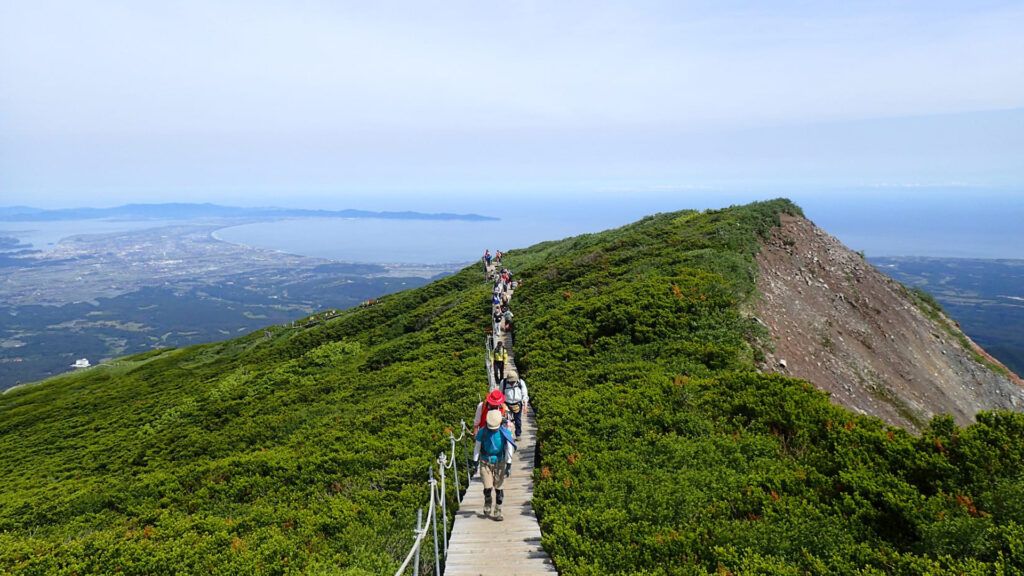
The city of Tottori and its surroundings offer a wide range of attractions that reflect the region’s culture, history, and natural beauty. Here are some of the most interesting sights and activities that visitors can expect in Tottori and its nearby areas:
Tottori Castle Park
The ruins of Tottori Castle are a popular destination for history enthusiasts and nature lovers. The castle dates back to the 16th century and was once an important fortress. Today, only the ruins of the original castle remain, but the surrounding park offers a beautiful landscape, especially in spring during the cherry blossom season. From the park’s elevated position, visitors can enjoy great views of the city and the surrounding mountains.
Kannon-in Temple
This Buddhist temple is known for its splendid gardens and peaceful atmosphere. Kannon-in Temple dates back to the Edo period and features a picturesque Japanese garden designed in the “strolling” style. Visitors can relax in the temple with a cup of green tea and enjoy the serene surroundings. In autumn, when the maple leaves turn vibrant red, the temple becomes a truly stunning sight.
Sakaiminato and Mizuki Shigeru Road
Sakaiminato, a city about an hour from Tottori, is famous as the hometown of Mizuki Shigeru, the creator of the renowned manga GeGeGe no Kitaro. Mizuki Shigeru Road is a street dedicated to the artist’s work. Along the road, visitors will find numerous bronze statues of beloved manga characters, making it a fun and unique destination. The Mizuki Shigeru Museum also offers deeper insights into the artist’s life and works.
Uradome Coast
About 20 kilometers northwest of the Tottori Sand Dunes lies the Uradome Coast, known for its scenic rock formations, clear waters, and dramatic landscapes. The coast is part of the San’in Kaigan National Park and offers ideal conditions for hiking, snorkeling, and boating. Visitors can also admire the impressive cliffs and caves from the land, with hiking trails providing breathtaking views of the sea and the rugged rock formations.

Hakkei-kan Museum
The Hakkei-kan Museum in Tottori houses a collection of artworks and historical artifacts that reflect the region’s history and culture. Notably, the museum features exhibitions on traditional crafts from the prefecture, such as ceramics and textiles. It provides deep insights into the cultural roots of the region and how they have evolved over the centuries.
Jinpu-kaku Villa
The Jinpu-kaku Villa is an impressive example of Western architecture in Japan and was built in 1907 as a residence for the imperial family. Today, it is designated as a national cultural property. The villa is surrounded by extensive gardens that are especially worth visiting in spring and autumn. Visitors can explore the rooms of the villa and take a look at the luxurious interiors and the influence of Western architecture on Japanese buildings.
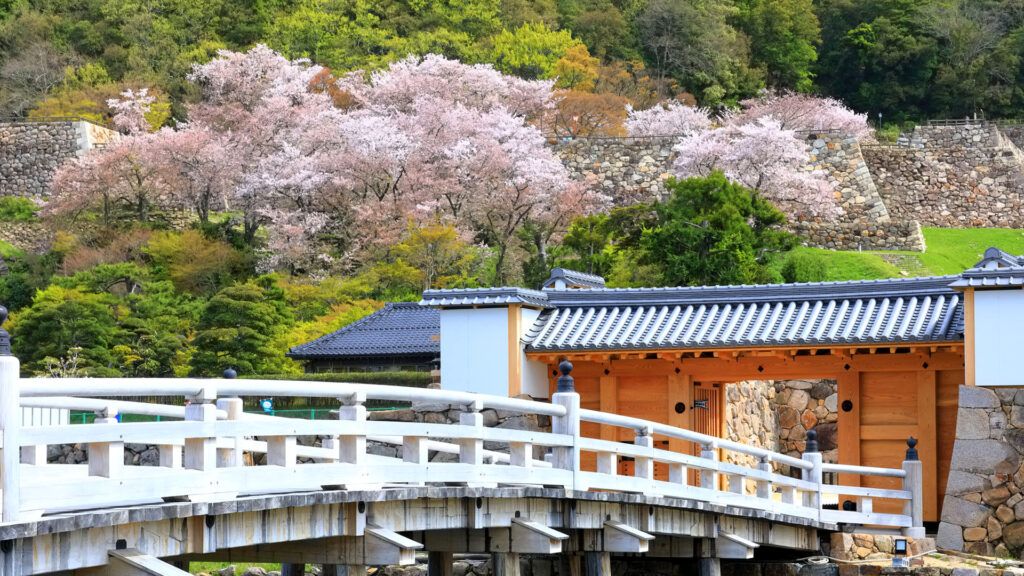
Watanabe Museum of Asian Antiquities
This museum features a vast collection of Asian antiquities, including Buddhist art, ceramics, textiles, and armor. It is a fascinating destination for culture enthusiasts interested in the history of Asian art and the connection between Japan and neighboring cultures. The Watanabe Museum also hosts exhibitions about the trade routes that existed between Japan and other Asian countries over the centuries.
Mount Daisen
The majestic Mount Daisen, about an hour’s drive from Tottori, is the highest mountain in the Chugoku region, standing at 1,729 meters. Often referred to as the “Mt. Fuji of the western region,” it is a popular destination for hikers and nature lovers. In winter, the mountain becomes a ski resort, while in spring and summer, it offers excellent hiking opportunities. The trails provide stunning views of the surrounding landscapes and the Sea of Japan. The Daisen-ji Temple at the foot of the mountain is a historic shrine and another worthwhile stop for visitors.
Mitokusan Sanbutsu-ji Temple
The Mitokusan Sanbutsu-ji Temple is a true gem among Japan’s temples and is located about an hour away from Tottori in the mountains. Particularly famous is the Nageire-do, a small temple perched on a steep cliff, seemingly embedded in the rocks as if by magic. The hike to the temple is challenging, as the path is steep and unpaved, but the views and the atmosphere of the temple make the effort well worth it.
The Sand Museum
Located near the Tottori Sand Dunes, the Sand Museum is entirely dedicated to sand sculptures. International artists from around the world create impressive sand sculptures, which are displayed each year based on a specific theme. These monumental works of art, made from tons of sand, demonstrate how ephemeral materials can be transformed into remarkable art. The museum is open year-round and offers visitors a creative and surprising insight into the world of sand sculptures.
In conclusion, the city of Tottori and its surroundings offer a fascinating mix of culture, nature, and history. Whether exploring the majestic Tottori Sand Dunes, visiting temples, or discovering the region’s unique museums, there is something for every visitor. Nature lovers and adventurers will especially enjoy the outdoor activities, while art and culture enthusiasts can immerse themselves in the area’s rich history and creativity.
Culinary Highlights in and around Tottori
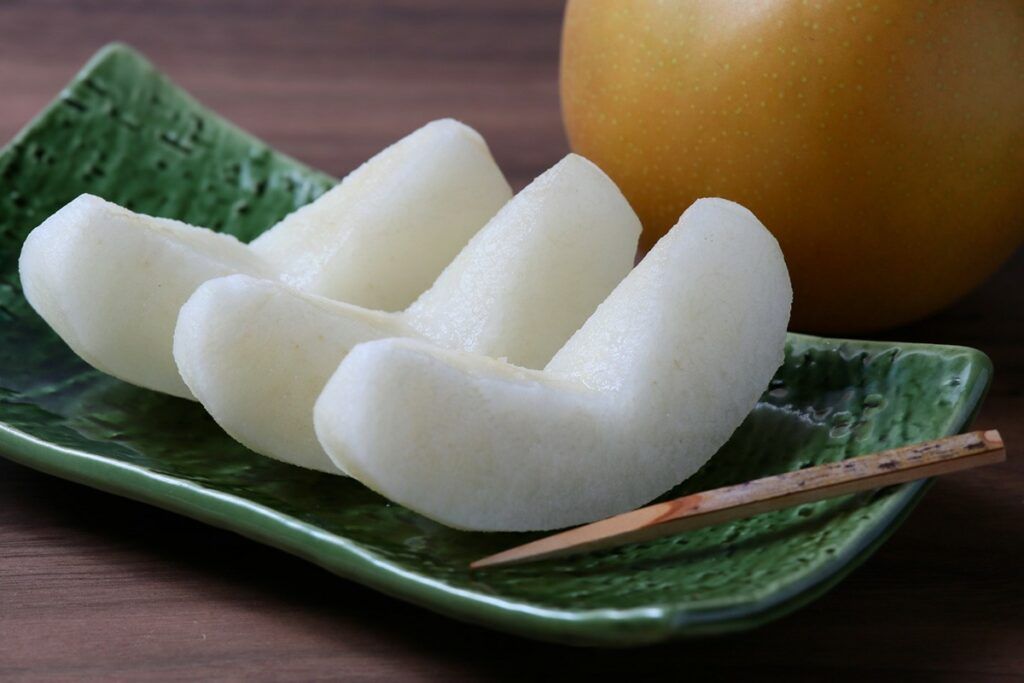
Typical recipes and culinary specialties from the Tottori region reflect the natural diversity and traditional cooking techniques that have developed over time. The proximity to the Sea of Japan and the fertile soils of the prefecture shape the region’s cuisine, known for its fresh fish, seafood, and locally grown vegetables. Here are some of the most famous dishes and ingredients typical of Tottori and its surroundings:
Matsuba-gani (Snow Crab)
Tottori is famous for its snow crabs, known as Matsuba-gani. These crabs are mainly caught in winter and are considered one of the finest delicacies of the region. Preparation is relatively simple, as the flavor of the fresh crab takes center stage. They are often steamed or grilled and served with ponzu sauce or a dip made from soy sauce and citrus. Kani shabu (crab Shabu-Shabu) is also a popular dish, where the crab is cooked in a light broth and then dipped in sauce.
Tottori Wagyu Beef
In addition to seafood, Tottori is also known for its high-quality Wagyu beef. The meat is famous for its fine marbling and tender taste. It is often used for Yakiniku (grilled meat) or in dishes like Sukiyaki (a hot pot dish) and Shabu-Shabu. In these dishes, the thinly sliced meat is briefly cooked in broth or on the grill to preserve its delicate flavor.
Shijimi Clams from Lake Nakaumi
Lake Nakaumi, located between Tottori and the neighboring Shimane prefecture, is known for its Shijimi clams (small freshwater clams). These clams are often used in soups, especially in classic miso soup. Their flavor is mild and rich, and they are considered particularly nutritious. Shijimi clam miso soup is often served as a healthy breakfast.
Saba no Kabayaki (Mackerel in Kabayaki Sauce)
Mackerel is another important part of the local cuisine. In Tottori, mackerel is often prepared as Saba no Kabayaki, where the mackerel fillets are marinated and grilled, similar to the more well-known Unagi Kabayaki (grilled eel). The sweet soy-based kabayaki sauce gives the fish a strong, lightly caramelized flavor.
Daisen Chicken
The Daisen Jidori chicken, raised free-range on the fertile lands around Mount Daisen, is another delicacy of the region. The meat is particularly tender and juicy, and is used in a variety of dishes, including Yakitori (grilled chicken skewers) and Karaage (fried chicken). The fresh, natural taste of the meat makes it a favorite among locals and visitors alike.
Nashi Pears (Asian Pears)
Tottori is one of Japan’s largest producers of Nashi pears. These juicy, sweet fruits have a crisp texture and are used both fresh and in desserts. Nashi pears from Tottori are known for their size and refreshing flavor. They are often served in fruit salads, as a side to savory dishes, or in sweet desserts.
Suppon-Nabe (Turtle Soup)
A lesser-known but traditional specialty of the region is Suppon-Nabe, a hot soup made from Suppon, a soft-shelled turtle that is considered a delicacy. This dish is not widely available throughout Japan, but can be found in specialized restaurants in Tottori. The flavor is mild, and the soup is believed to have health benefits.
Conclusion
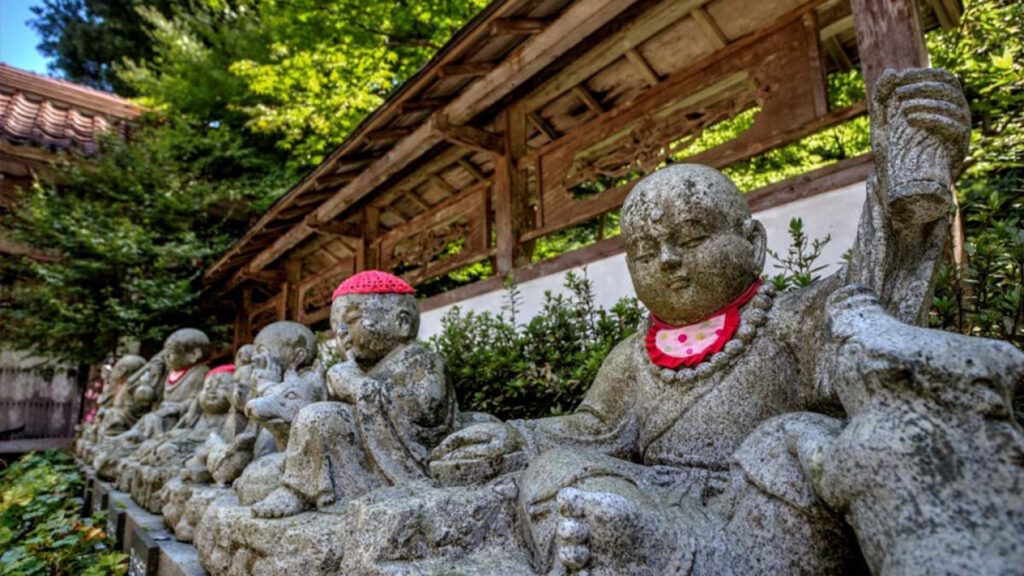
The city of Tottori and its surroundings offer a fascinating blend of culture, nature, and history. From the impressive Tottori Sand Dunes to the temples and museums that delve deep into Japan’s history, there is something for every visitor. Nature lovers and adventurers, in particular, will be thrilled with the numerous outdoor activities, while art and culture enthusiasts can enjoy the region’s museums and historical sites.
The Tottori Sand Dunes are a unique natural wonder in Japan, not only impressing with their extraordinary landscape but also with the variety of activities and attractions in the area. Whether you are an adventurer, nature lover, or art enthusiast, there is something for everyone here. Anyone who wants to experience Japan from a different, unexpected perspective should not miss this exceptional destination.


